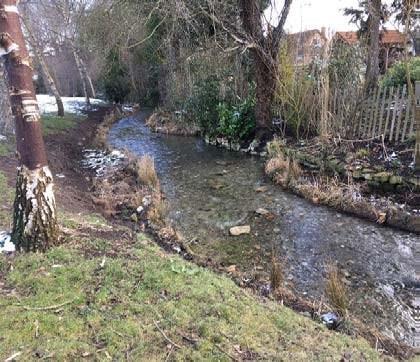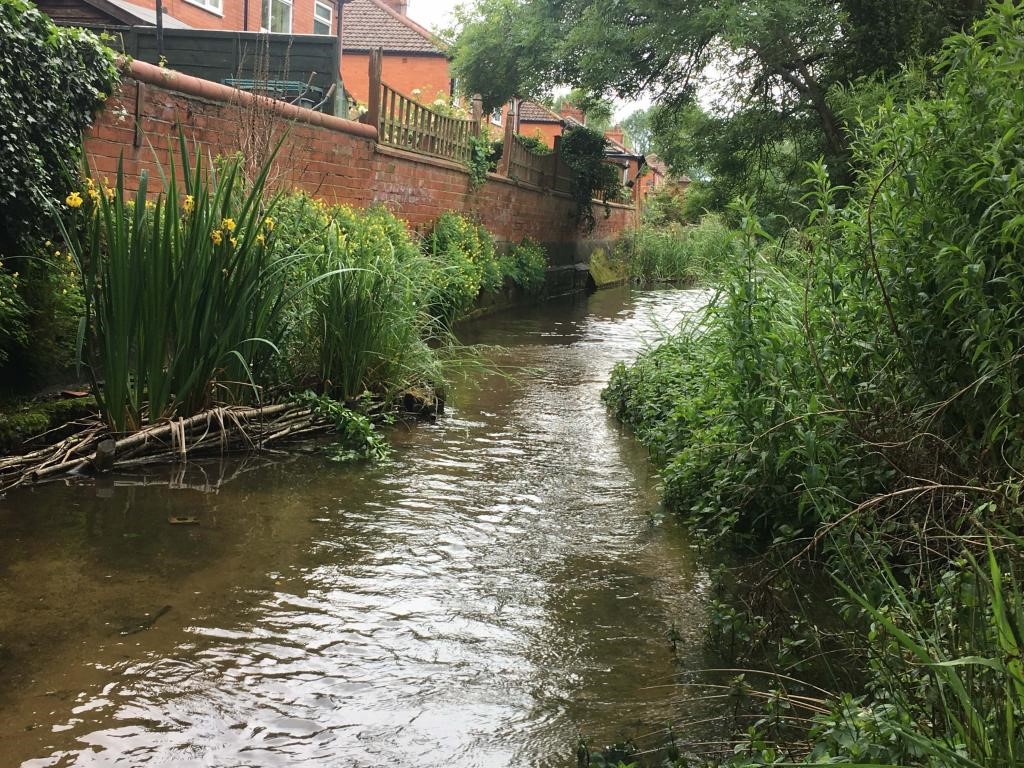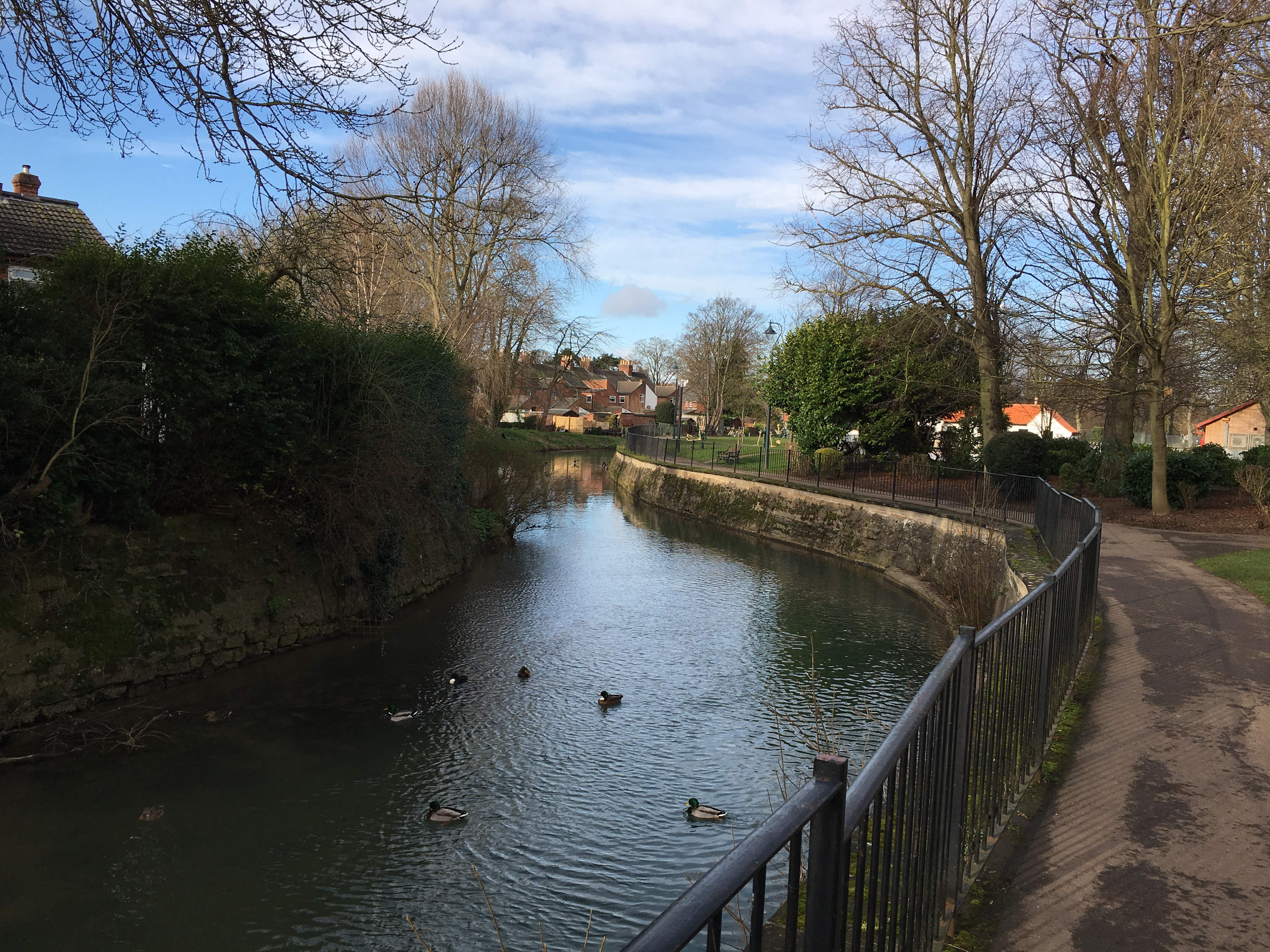In-channel improvements work to restore river channels that have been heavily modified, and lack the habitat essential to support river species. These rivers are often very degraded due to historic straightening, incising and widening of the river, confining them within hard banks.

Restored section of the River Slea, involving the creation of berms, in 2018.
Enhancements in the river work with natural processes to reinstate a natural environment, with variation in the river, creating habitat and increasing species diversity and abundance, benefiting people and wildlife.
Rivers naturally meander and flood, but as most urban areas, such as Grantham and Sleaford, have structures built on the floodplain of the river, the river cannot meander as it would in a natural environment.
In an attempt to prevent flooding in urban areas, rivers have historically been straightened to channel water quickly through the town. However, this isn't effective and strips the river of all its in-channel features and creates a uniform river with no habitat.
The introduction of in-channel enhancements, such as soft berms set at summer water levels to ultimately create a new low inset floodplain, will improve and reinstate lost habitat. The berms will create a meandering channel, within its confined banks, slowing the flow and reducing the amount of fine silt that accumulates on the river bed.
These artificial meanders will also create variation in the river, encouraging bedforms to form, creating essential habitat for the diverse range of river wildlife. As well as creating an increase in high quality habitat in the channel, in-channel improvements also benefit the community as the river becomes more aesthetically pleasing and a more interesting area for leisure.

Restoration of Welton Beck, Lincoln, by adding planted coir rolls and regrading banks.
The introduction of in-channel enhancements encompass a range of techniques:
- Soft Berms narrow the channel and create artificial meanders
- Gravel and cobble introduction raises the river bed, reconnecting the river with its floodplain and creates spawning habitat for fish species and valuable shelter for native crayfish and other invertebrates.
- Bank softening reconnects the river with its floodplain and improves habitat for a diverse range of species including mammals like water voles, invertebrates like native crayfish and resting areas for wildfowl to nest.








